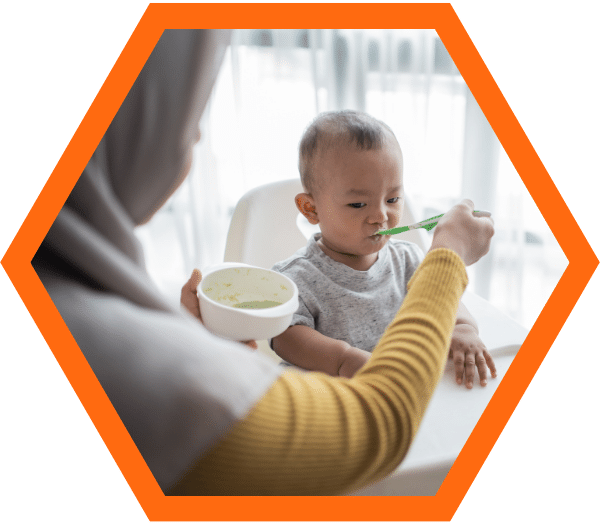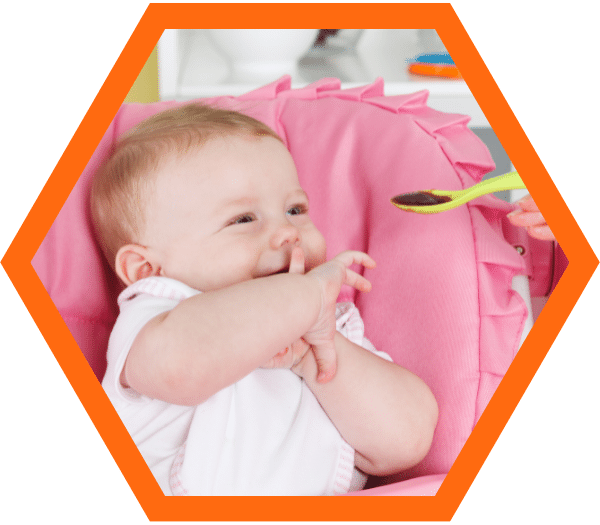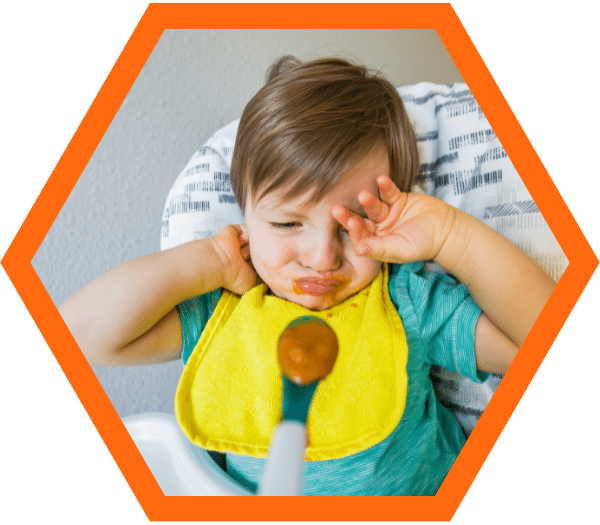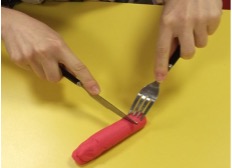Fine motor skills
Eating and drinking
Deciding how to feed your baby is an important and personal decision that parents make for their child.
Exclusive breastfeeding delivers many benefits including a significant reduction in gastrointestinal infections and a reduction in the risk of Sudden Infant Death.
Breastfeeding supports a close and loving relationship which help baby’s brain development and formation of a positive attachment. Breastfeeding also improves mental health and can reduce the risk of postnatal depression.
However you decide to feed your baby, Bromley 0 to 19’s trained professionals will support your choice and will provide you with as much evidence-based information as you need to make your decision easier.
Breastfeeding your baby
The Bromley 0 to 19 service will support you with breastfeeding in Bromley. They offer a range of 1-1 appointments via face-to-face clinic consultations, telephone and virtual appointments.
Bottle feeding your baby
If you are planning to bottle feed with expressed breast milk or infant formula, the Bromley 0 to 19 service have produced a range of tips will help keep your baby safe and healthy.

First solid foods
Introducing your baby to solid foods – sometimes called weaning or complementary feeding – should start when your baby is around six months old.
It’s a really important step in their development, and it can be great fun to explore new flavours and textures together.
Eating, drinking and swallowing
Swallowing is an activity that most of us do not even think about, it just happens.
But swallowing is a complex process that involves a large number of nerves and muscles that all have to work together to stop any food or liquid entering the windpipe (trachea) and ‘going down the wrong way’.
We all momentarily ‘close’ our airway and stop breathing as we swallow. To do this we must have good control over our breathing.
When our breathing is disrupted for any reason, it can be more difficult to coordinate the swallow with breathing and food or drink may enter the windpipe as we swallow. This is known as aspiration.
Difficulty swallowing is known as dysphagia.


Fussy eaters
Many children and young people go through phases of refusing meals or being more picky with food. This can be a normal part of growing up but it can be worrying for families, and eating and feeding problems can sometimes dominate family life.
There can many reasons why a child may not want to eat a particular food or type of food. We have collated a range of tips and advice that you may find useful.
Introducing a cup
You can try introducing a cup between nine and 12 months. Some useful tips include:

Holding the cup
Holding the cup
- Start with a cup with two handles to help your child to hold it.
- Once they’re confident with this, introduce a cup with a single handle.
- Eventually move to a beaker that they need to hold with both hands.

Drink options
Drink options
- Fill the cup half-way with thick drinks, such as smoothies, milkshakes and yoghurt drinks.
- This gives them more time to practice their lip seal around the cup.
- Try thinner drinks once they are more confident.

Lifting the cup
Lifting the cup
- Slowly help them lift the cup to drink from.
- Once they’re confident, start giving them less and less help.
- Give your child a see through or tilted cup so they don’t have to tip their heads back as far
Using cutlery
There are a number of techniques you can use to help your child develop cutlery skills, such as:
Eat at the same time as your child so they can copy you.
Use the right sized cutlery for a better grip, such as child-sized cutlery or chunky cutlery.
Make sure your child is sat high enough that they can comfortably prop their elbows on the table, their feet are supported, and their bowl or plate is on a non-slip mat.
Introduce a child sized spoon between nine and 12 months old and let them play with it and get used to the motions of eating by feeding their toys.
When your child is confident, let them use the spoons during mealtimes and using your hands to support their elbow and guide their hand.
Introduce a child sized fork once they’re confident using a spoon.
Start by loading the fork for them and using your hands to guide them.
Give them foods that will stick to the spoon, such as porridge, mashed potato and puddings, or are easy to stab with a fork, such as fruit or cooked vegetables.
Give them a fork and a spoon at once to practice with a piece of cutlery in both hands.
Knife and fork skills
Learning to use a knife and fork is best practised away from meal times, so your child does not have the additional pressures of time and hunger.
Using play dough is a good place to start, progressing on to helping prepare foods such as bananas or a cucumber for a salad.
Try junior caring cutlery as it has a groove showing where to place index finger.
Start with the knife
Using plasticine or play dough to roll out a sausage shape. Use a cutting board or an old firm table mat at this stage, rather than a plate.
Hold the knife in dominant hand (unless you do not do this for cultural reasons) with correct index finger positioning.
Use the hand to keep the play dough steady and use a forward and backward action to cut.
Practise until your child gets into the swing of this.

Using a knife and fork together
With the pieces of playdough on the table, get your child to hold the fork in their non dominant hand and retrieve one piece by ’stabbing’ the fork into the piece of play dough. Adult to use the knife to slide the piece of playdough into the pot. Practise until your child gets into the swing of this.
Now the knife and fork together. Hold the fork in the non-dominant hand. Place ‘pointy finger’ (index finger) on the back of the fork with the remaining fingers wrapped around the handle. Hold the knife with the same grasp with the dominant hand, i.e. pointy finger on back edge of knife.
Push the fork into the playdough sausage and hold it still.
Place the blade of the knife near the fork but not against it. Cut through the playdough sausage with a forward and backward action.
Slide the piece of playdough off the fork using the knife
Once your child can do the above, get your child to cut easy-to-cut foods using the knife and fork.


